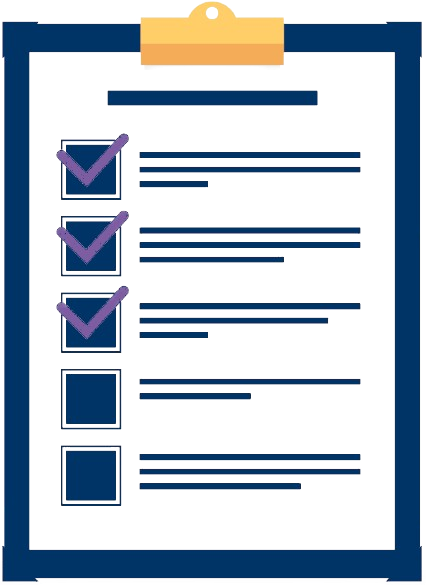Suggestions based on the Question and Answer that you are currently viewing
Solve Problem 19.7, only assume a cluster mill with working rolls of radius = 50 mm. Compare the results with the previous two problems, and note the important effect of roll radius on force, torque and power.
At the end of last year, Milena, a 35 percent partner in the five-person LAMEC Partnership, has an outside basis of $60,000, including her $30,000 share of LAMEC debt. On January 1 of the current year, Milena sells her partnership interest to MaryLynn for a cash payment of $45,000 and the assumption of her share of LAMEC’s debt. a. What are the amount and character of Milena’s recognized gain or loss on the sale? b. If LAMEC has $100,000 of unrealized receivables as of the sale date, what are the amount and character of Milena’s recognized gain or loss? c. What is MaryLynn’s initial basis in the partnership interest?
Erin’s basis in her Kiybron Partnership interest is $3,300. Erin receives a distribution of $2,200 cash from Kiybron in complete liquidation of her interest. Kiybron is an equal partnership with the following balance sheet: Assets: Tax Basis FMV Cash $ 2,200 $ 2,200 Stock (investment) 1,100 2,200 Land 6,600 2,200 Totals $ 9,900 $ 6,600 Liabilities and capital: Capital- Erin 3,300 - Carl 3,300 - Grace 3,300 Totals $ 9,900 a. What are the amount and character of Erin’s recognized gain or loss? What is the effect on the partnership assets? b. If Kiybron has a §754 election in place, what is the amount of the special basis adjustment?
Norman Co., a fast-growing golf equipment company, uses GAAP. It is considering the issuance of convertible bonds. The bonds mature in 10 years, have a face value of $400,000, and pay interest annually at a rate of 4%. The equity component of the bond issue has a fair value of $35,000. Greg Shark is curious as to the difference in accounting for these bonds if the company were to use IFRS. (a) Prepare the entry to record issuance of the bonds at par under GAAP. (b) Repeat the requirement for part (a), assuming application of IFRS to the bond issuance. (c) Which approach provides the better accounting? Explain.
A company produces a certain part whose most important dimension is 37.50 ±0.025 in. If the tolerance is exceeded, the customer will return the part to the manufacturer at a cost of $200 in rework and replacement expenses. (a) Determine the constant k in the Taguchi loss function, Eq. (42.13). (b) The company can add a finish grinding operation that will allow the tolerance to be reduced to ±0.010 in. Using the loss function from part (a) what is the value of the loss associated with this new tolerance?
Kimmel Company uses the net method of accounting for sales discounts. Kimmel also offers trade discounts to various groups of buyers. On August 1, 2014, Kimmel sold some accounts receivable on a without recourse basis. Kimmel incurred a finance charge. Kimmel also has some notes receivable bearing an appropriate rate of interest. The principal and total interest are due at maturity. The notes were received on October 1, 2014, and mature on September 30, 2016. Kimmel’s operating cycle is less than one year. Instructions (a) (1) Using the net method, how should Kimmel account for the sales discounts at the date of sale? What is the rationale for the amount recorded as sales under the net method? (2) Using the net method, what is the effect on Kimmel’s sales revenues and net income when customers do not take the sales discounts? (b) What is the effect of trade discounts on sales revenues and accounts receivable? Why? (c) How should Kimmel account for the accounts receivable factored on August 1, 2014? Why? (d) How should Kimmel account for the note receivable and the related interest on December 31, 2014? Why?
Jessica’s friend Zachary once stated that he couldn’t understand why someone would take a tax course. Why is this a rather naïve view?
Are there any features of free-market capitalism which would discourage innovation?
Condensed financial data of Pat Metheny Company for 2014 and 2013 are presented below. PAT METHENY COMPANY COMPARATIVE BALANCE SHEET AS OF DECEMBER 31, 2014 AND 2013 2014 2013 Cash $1,800 $1,150 Receivables 1,750 1,300 Inventory 1,600 1,900 Plant assets 1,900 1,700 Accumulated depreciation (1,200) (1,170) Long-term investments (held-to-maturity) 1,300 1,420 $7,150 $6,300 Accounts payable $1,200 $ 900 Accrued liabilities 200 250 Bonds payable 1,400 1,550 Capital stock 1,900 1,700 Retained earnings 2,450 1,900 $7,150 $6,300 PAT METHENY COMPANY INCOME STATEMENT FOR THE YEAR ENDED DECEMBER 31, 2014 Sales revenue $6,900 Cost of goods sold 4,700 Gross margin 2,200 Selling and administrative expense 930 Income from operations 1,270 Other revenues and gains Gain on sale of investments 80 Income before tax 1,350 Income tax expense 540 Net income 810 Cash dividends 260 Income retained in business $ 550 Additional information: During the year, $70 of common stock was issued in exchange for plant assets. No plant assets were sold in 2014. Instructions Prepare a statement of cash flows using the indirect method.
Kenoly Corporation owns a patent that has a carrying amount of $300,000. Kenoly expects future net cash flows from this patent to total $210,000 over its remaining life of 10 years. The recoverable amount of the patent is $110,000. Prepare Kenoly’s journal entry, if necessary, to record the loss on impairment.
The following data relate to the Machinery account of Eshkol, Inc. at December 31, 2014. Machinery A B C D Original cost $46,000 $51,000 $80,000 $80,000 Year purchased 2009 2010 2011 2013 Useful life 10 years 15,000 hours 15 years 10 years Salvage value $ 3,100 $ 3,000 $ 5,000 $ 5,000 Depreciation Sum-of-the- Double-decliningmethod years’-digits Activity Straight-line balance Accum. depr. through 2014* $31,200 $35,200 $15,000 $16,000 *In the year an asset is purchased, Eshkol, Inc. does not record any depreciation expense on the asset. In the year an asset is retired or traded in, Eshkol, Inc. takes a full year’s depreciation on the asset. The following transactions occurred during 2015. (a) On May 5, Machine A was sold for $13,000 cash. The company’s bookkeeper recorded this retirement in the following manner in the cash receipts journal. Cash 13,000 Machinery (Machine A) 13,000 (b) On December 31, it was determined that Machine B had been used 2,100 hours during 2015. (c) On December 31, before computing depreciation expense on Machine C, the management of Eshkol, Inc. decided the useful life remaining from January 1, 2015, was 10 years. (d) On December 31, it was discovered that a machine purchased in 2014 had been expensed completely in that year. This machine cost $28,000 and has a useful life of 10 years and no salvage value. Management has decided to use the double-declining-balance method for this machine, which can be referred to as “Machine E.” Instructions Prepare the necessary correcting entries for the year 2015. Record the appropriate depreciation expense on the above-mentioned machines.
Charlie Brown, controller for Kelly Corporation, is preparing the company’s income statement at year-end. He notes that the company lost a considerable sum on the sale of some equipment it had decided to replace. Since the company has sold equipment routinely in the past, Brown knows the losses cannot be reported as extraordinary. He also does not want to highlight it as a material loss since he feels that will reflect poorly on him and the company. He reasons that if the company had recorded more depreciation during the assets’ lives, the losses would not be so great. Since depreciation is included among the company’s operating expenses, he wants to report the losses along with the company’s expenses, where he hopes it will not be noticed. Instructions (a) What are the ethical issues involved? (b) What should Brown do?
Raleigh Corp. has an investment with a carrying value (equity method) on its books of $170,000 representing a 30% interest in Borg Company, which suffered a $620,000 loss this year. How should Raleigh Corp. handle its proportionate share of Borg’s loss?
Tiffany is unmarried and has a 15-year-old qualifying child.Tiffany has determined her tax liability to be $3,525, and her employer has withheld $1,500 of federal taxes from her paycheck.Tiffany is allowed to claim a $1,000 child tax credit for her qualifying child.What amount of taxes will Tiffany owe (or what amount will she receive as a refund) when she files her tax return?
When is the stated interest rate of a debt instrument presumed to be fair?
The financial records of LeRoi Jones Inc. were destroyed by fire at the end of 2014. Fortunately, the controller had kept certain statistical data related to the income statement as follows. 1. The beginning merchandise inventory was $92,000 and decreased 20% during the current year. 2. Sales discounts amount to $17,000. 3. 20,000 shares of common stock were outstanding for the entire year. 4. Interest expense was $20,000. 5. The income tax rate is 30%. 6. Cost of goods sold amounts to $500,000. 7. Administrative expenses are 20% of cost of goods sold but only 8% of gross sales. 8. Four-fifths of the operating expenses relate to sales activities. Instructions From the foregoing information prepare an income statement for the year 2014 in single-step form.
How would each of the following items be reported on the balance sheet? (a) Accrued vacation pay. (j) Premium offers outstanding. (b) Estimated taxes payable. (k) Discount on notes payable. (c) Service warranties on appliance sales. (l) Personal injury claim pending. (d) Bank overdraft. (m) Current maturities of long-term (e) Employee payroll deductions unremitted. debts to be paid from current assets. (f) Unpaid bonus to officers. (n) Cash dividends declared but unpaid. (g) Deposit received from customer to guarantee (o) Dividends in arrears on preferred performance of a contract. stock. (h) Sales taxes payable. (p) Loans from officers. (i) Gift certificates sold to customers but not yet redeemed.
Andrew Bogut just received a signing bonus of $1,000,000. His plan is to invest this payment in a fund that will earn 8%, compounded annually. Instructions (a) If Bogut plans to establish the AB Foundation once the fund grows to $1,999,000, how many years until he can establish the foundation? (b) Instead of investing the entire $1,000,000, Bogut invests $300,000 today and plans to make 9 equal annual investments into the fund beginning one year from today. What amount should the payments be if Bogut plans to establish the $1,999,000 foundation at the end of 9 years?
Which is a more appropriate tax rate to use to compare taxpayers’ tax burdens – the average or the effective tax rate? Why?
Describe the RP technology called laminated-object manufacturing.
To stimulate the sales of its Alladin breakfast cereal, Loptien Company places 1 coupon in each box. Five coupons are redeemable for a premium consisting of a children’s hand puppet. In 2015, the company purchases 40,000 puppets at $1.50 each and sells 480,000 boxes of Alladin at $3.75 a box. From its experience with other similar premium offers, the company estimates that 40% of the coupons issued will be mailed back for redemption. During 2015, 115,000 coupons are presented for redemption. Instructions Prepare the journal entries that should be recorded in 2015 relative to the premium plan.
Can a shareholder’s basis in S corporation stock ever be adjusted to a negative number? Why or why not?
Explain the differences and similarities among the direct, step-down, and reciprocal methods.
The records for the Clothing Department of Sharapova’s Discount Store are summarized below for the month of January. Inventory, January 1: at retail $25,000; at cost $17,000 Purchases in January: at retail $137,000; at cost $82,500 Freight-in: $7,000 Purchase returns: at retail $3,000; at cost $2,300 Transfers in from suburban branch: at retail $13,000; at cost $9,200 Net markups: $8,000 Net markdowns: $4,000 Inventory losses due to normal breakage, etc.: at retail $400 Sales revenue at retail: $95,000 Sales returns: $2,400 Instructions (a) Compute the inventory for this department as of January 31, at retail prices. (b) Compute the ending inventory using lower-of-average-cost-or-market.
What is the difference between horizontal and vertical equity? How do tax preferences affect people’s view of horizontal equity?
The benefits of buying with AnswerDone:

Access to High-Quality Documents
Our platform features a wide range of meticulously curated documents, from solved assignments and research papers to detailed study guides. Each document is reviewed to ensure it meets our high standards, giving you access to reliable and high-quality resources.

Easy and Secure Transactions
We prioritize your security. Our platform uses advanced encryption technology to protect your personal and financial information. Buying with AnswerDone means you can make transactions with confidence, knowing that your data is secure

Instant Access
Once you make a purchase, you’ll have immediate access to your documents. No waiting periods or delays—just instant delivery of the resources you need to succeed.
